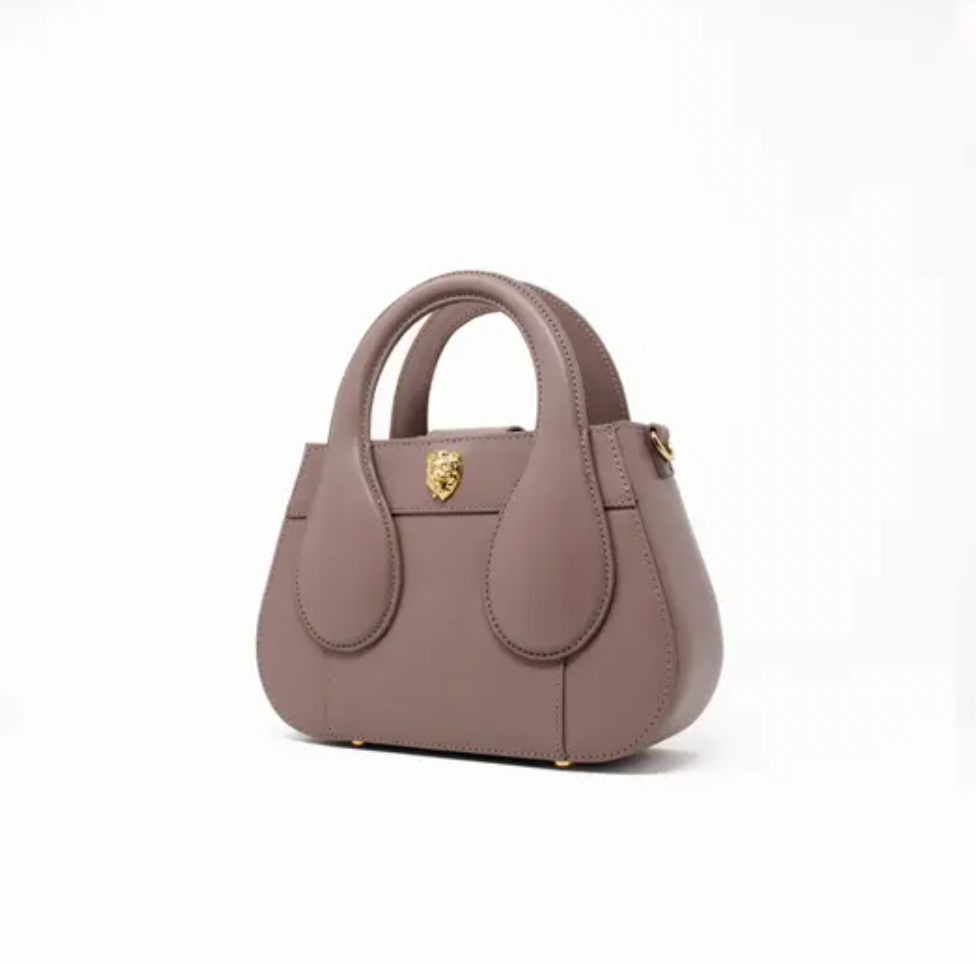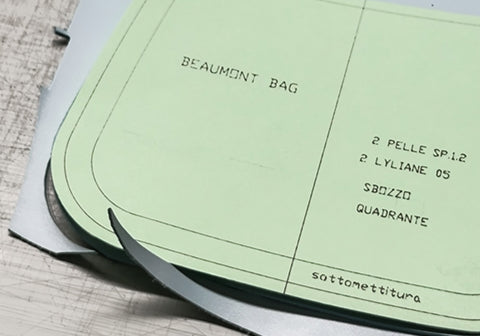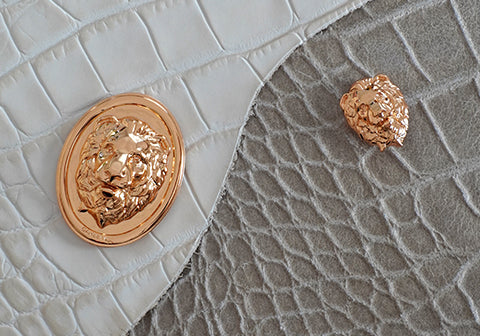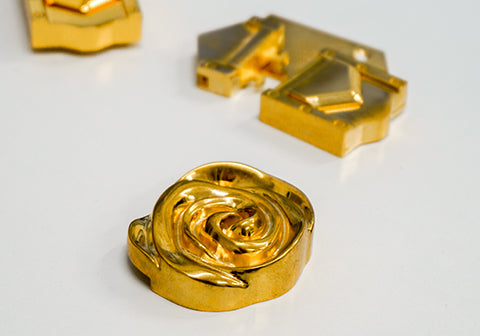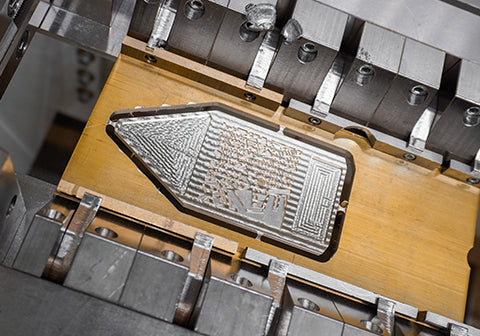Artikel: Where Craft Meets Vision: The Story Behind Vetrina Mia
Where Craft Meets Vision: The Story Behind Vetrina Mia
Fashion is a traditional industry, with details and knowledge regarding the materials, craftsmen and inner workings that are steeped in history and insider know-how. As an industry outsider, Kate Chang was and is always breaking the mold as she challenges the industry’s stagnant but stubborn structure.

Kate was born in Walnut Creek, California, right in the heart of Silicon Valley. Once a green space filled with apple orchards, the advancement of Stanford University and the talent that gathered because of it slowly transformed the area that was once known as “The Valley of Heart’s Delight” into the the center of technology and innovation of the world and one of the roaring engines of the American economy. To this day, you can overhear conversations in cafes and restaurants where young entrepreneurs discuss how they had rejected a multi-million dollar investment as the investors' ideologies simply did not align with those of the founders. California isn’t a country but it has a GDP of 4.1 trillion dollars, putting it around or just ahead of Japan’s GDP as of writing this article. It is a mind boggling and almost crazy place where ambitious talent blindly pursues the limits of creation and discovery. This land that transformed from an empty apple orchard into what it is today - and growing up in that environment where cultures constantly clashed, mixed and changed - let Kate become the ambitious international entrepreneur she is today.
When asked about her upbringing, Kate said that she believes that the vibrant and multicultural economy of California formed a key part of her beliefs and ideologies. “New York became the financial center of the world due to its proximity to the Old World cities in Europe - the Mayflower brought over talent and ambitions of a new life. California is close to Asia in the United States and those geological factors led to its ability to gather talent and funding to become the powerhouse it is today.”
After studying law at the University of California, Berkeley, Kate was accepted to study Law at Columbia Law School. However, instead of following the norm and pursuing a career in law, she took a sabbatical year instead to travel to Asia to widen her horizons and see the world. There, in the midst of the bustling streets of Hong Kong and the concrete jungles of Tokyo, Kate said she felt like a veil had been lifted and a new world with hidden opportunities had been revealed. On the other side of the globe was a market and a population equally ambitious and if anything even harder working than anything she had seen growing up. There she joined top Venture Capital Investment firms like the Sumitomo Corporation Equity Asia in their Central, Hong Kong office and CyberAgent Ventures (now CyberAgent Capital), playing integral roles in investments in companies like Dianping.com, KakaoTalk, and others. Her work, achievements and reputation at the time as a razor sharp, decisive and always in motion businesswoman were irrefutable as major media outlets reported on her. An example is below from Tech in Asia, a reputed consumer technology and venture capital industry publication in Asia, from the early days of her career: https://www.techinasia.com/asias-top-female-startup-investors-on-why-they-love-their-jobs-part-i
Kate shared with me how when she told the professor at Columbia Law School that she was passing up on continuing her law studies, the professor reminded her how difficult it was to get accepted and that many people dreamed of a chance to study there - but at the same time, the same professor shared that he believed there was always a harsher university outside the educational world named society.
“Have you ever wished that you could experience and shop the streets and boutiques of Milan from the comfort of your home?” Kate at this point of our conversation, brought up the million dollar question. Who hasn’t dreamed of visiting Quadrilatero della Moda of Milan to experience the Mecca of craftsmanship, elegance and luxury heritage. While it's easy to become distracted by the famous Maison de couture that line those streets, each and every alleyway in those streets is adorned by smaller yet equally proud fashion boutiques that are like a sparkling gemstone adorning a royal crown. There is an Italian charm and uniqueness that invites even the most callous to try a new look.
Inspired by these streets, Kate took 8 years traveling around Europe, signing contracts with unique individual designers that had decided to spread their wings after long and successful careers with major fashion houses as well as with smaller, younger but equally talented and ambitious designers from a new generation. Matching those with generational factories housing craftsmen that practiced age-old techniques has resulted in unique and luxurious fashion pieces that help set one apart from the crowd.
Kate shared with me details about many of the designers that she has signed contracts with: Fabio Menconi who left significant contributions at Armani in his past work, to Simone Botte's brand Simon Cracker, a torch-bearer for the punk fashion movement who regularly shows with brands like Versace and Prada, Marina Lorenzi who left her mark on countless classic models, and Frederic Lesellier who supervises and mentors craftsmen for Chanel and countless other talented designers. Regardless of their ages, each and every one of these designers have found the courage to leave their stable and successful careers to leave their own mark in fashion.
That was when I started to understand the Herculean task that Kate had undertaken. It was hard enough for me to imagine her, as a woman, meeting with a brand owner and a factory to communicate and reach an agreement but to do that for over 200 brands and countless factories? The first word that came to mind was “impossible” and yet there she was, having achieved that and more. Kate’s deep understanding and knowledge of the fashion industry, from the processes involved in the manufacturing, to the pricing and sourcing of leathers and materials, knowledge of the regions of Italy and how their strengths tied into their craft, and more than anything, her understanding of the human heart was what enabled her to overcome these challenges.
Kate’s experiences across Europe revealed how these creative directors have been searching for an opportunity like this for years. Whilst they often already had stable jobs working for famous fashion houses that could keep them going for the rest of their lives, they felt that their creativity and fashion soul was being snuffed out like a candle by the industry that forced them to repeat the same designs season after season with minor tweaks.
Vetrina Mia has already grown to the point that they are seeing over 80,000 shoppers on their website every day. This is in spite of the fact that they are only currently doing limited work in a handful of limited regions including Japan, Korea, Hong Kong, Taiwan, Philippines, Thailand, Malaysia, Singapore and Indonesia. They plan on further expanding to mainland China, Australia, the UAE, Saudi Arabia and beyond. Kate specifically showed me the live count of the backend of their website, highlighting live statistics and at the moment, there were over 800 live shoppers on the Vetrina Mia website. With the 20 odd styles and 4 brands that they have launched, they have already achieved results that put them ahead of most fashion brands excluding the major haute couture brands.
With these roughly 2.5 million shoppers visiting their website every month, it's not a question of if but rather when Vetrina Mia will become a bridge that connects European fashion culture with the massive markets of Asia.
One question that came up during the interview was regarding their Instagram page. When asked about why their page, although aesthetically pleasing, was currently only at over 3000 followers, Kate confidently confirmed that this too was part of their strategy. “Every brand and company in fashion is obsessed with increasing their follower count on social media. While that is definitely important and a good thing to do, these followers do not always translate to purchases. Growing up in Silicon Valley’s culture where there is an obsession with obtaining significant and real results, it is my belief that while it's great that our creatives are appreciated by consumers, it's even more important to bring those consumers to our website and ecosystem to shop. I think it's more important in the fashion industry today than ever to emphasize these real results and therefore made the decision to change our focus from increasing our follower count to finding consumers actually willing to shop and make a purchase.” In line with this logic, instead of hiding behind pretty visuals, every advertisement from Vetrina Mia proudly shows the price of every bag to ensure transparency and that the shoppers that visit truly want to buy their goods.
Kate calmly shared with me that when she first made the decision to show the price of each bag in every advertisement, the traffic that the website was getting dropped in half initially. I broke out in a cold sweat but Kate continued on that “Although it was painful, I understood that there was a need to find actual shoppers who were genuinely interested in making a purchase. Vetrina Mia loves the people who follow and leave likes as they appreciate our brands but what we need for growth is that extra step, the clientele that is ready to make a luxury bag purchase”. In fact, in the 2 month or so since that decision was first made, Vetrina Mia has already increased their monthly shopper count by 60 folds, a further testament to Kate’s business acumen. On top of that she shared with me how on average, customers were spending on average 200 to 300 seconds on just a single product page, further evidence showing that the brands are gaining shoppers who cannot bring themselves to look away from the products and how customers have come to recognize the hard work that the craftsmen put into every final product.
These results that far exceed what any other fashion company has achieved to this day in such a short time are a cumulation of the inspirational work of the fashion directors, the traditional handiwork and dedication of the craftsmen and the patient and persistent endeavor of the team at Vetrina Mia under Kate’s leadership. If anyone asked 3 months ago whether these results were achievable, the answer would have been a straight and simple “Impossible!”.
Another issue that the current fashion industry faces is its innately resistant and stubborn structure. Most brands and major fashion houses already have an established look, a winning formula that elevated them to the podium upon which they sit today. Whilst timeless classics surely exist, this also means that these fashion houses tend to release similar uninspired creations season after season as the designers are not allowed to express their creativity and instead are limited by company rules. This is why in some cases, the classic model that one's mother bought 30 years ago, often is the same or at least similar to one that the daughter may buy today.
In the past this may not have been an issue as haute couture was defined not only by the appearances of the products but also by the quality and sense of luxury that they conveyed. However, society has changed and we currently live in an age where uniqueness and individualism stand as pillars of one's identity. I’m sure many in this readership have had a similar experience where they, in a social situation, be it in the office or at a dinner with old classmates, felt a slight annoyance when someone else showed up wearing the same shirt or held the same bag. Kate vividly remembered how a Japanese client shared with her that, in their opinion, Vetrina Mia solves these issues, not only by being a new player in the market presenting a high quality luxury product but also because there is a unique design, history and inspiration behind every product created, thus creating a new channel for shoppers to enjoy and select according to their tastes and preferences. Its true that each individual designer has within them infinite inspiration that comes from their personal stories of growth and their innate desire to freely express their emotional interpretations of art. Kate believes that fashion should not only be more accessible than what the luxury fashion houses want us to think but that the uniqueness and expression of oneself cannot be sacrificed in pursuit of that.
Currently Vetrina Mia is re-working its factory and supplier chains to meet the new found demand that they face. I understood that this was especially challenging as Italian craftsmen require time, often days to transform one bag from a piece of leather to its final form. Kate told me that this adds an additional challenge and question of how to sustainably scale production while maintaining quality.
Vita Mia magazine is establishing itself here as a portal for the designers and craftsmen to share their inspirations and aspirations. These artisans have countless stories and inspirations that they are dying to share - words that would’ve never seen the day of light under the rigid culture of the major fashion houses. The shoppers that visit Vetrina Mia have also asked for a better way to understand what the designers and brands are thinking and planning. Right now Vetrina Mia is showcasing only 4 of the 200 brands that they’ve signed with, partially to tell the tale of traditional leather working in Europe but also to simulate the streets of Milan where the stores are constantly changing to show a new face in fashion to the ever curious crowds. However, they understand that the over 2 million monthly shoppers are dying to meet the next brand that is just around the corner. To satisfy that need, this magazine will be a window into the inner mechanisms of the fashion world, delivering stories and inspiration directly from Vetrina Mia’s 200 plus designers and hundreds of craftsmen to our readership.
This isn’t the voice of Vetrina Mia but rather the voice of these designers, that of the factories and their craftsmen. Each and every story will come from them, every topic decided by them. It may seem different from your normal curated magazine that has a set publishing date and strict editorial guidelines and styles, something this magazine doesn’t have: perhaps not every photo may be fashion shoot standard, or perhaps not every word may be strictly curated to be as eye-catching as possible. But it will be the raw and true voice that these oppressed creators have been holding within for decades and we hope that it will become fertile grounds where a fashion garden can bloom, introducing new colors, shapes and emotions to the visitors every season and a new edition will be released once we have enough content.
Written By: Vita Mia Magazine and Blog Head Editor


